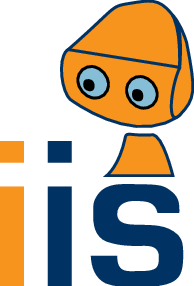research:projects
Differences
This shows you the differences between two versions of the page.
| Both sides previous revision Previous revision Next revision | Previous revision Next revision Both sides next revision | ||
|
research:projects [2019/10/29 07:45] Simon Haller-Seeber old revision restored (2019/08/29 17:35) |
research:projects [2020/03/05 13:17] Alejandro Agostini |
||
|---|---|---|---|
| Line 2: | Line 2: | ||
| ===== Current Projects ===== | ===== Current Projects ===== | ||
| + | |||
| + | **SEAMLESS LEVELS OF ABSTRACTION FOR ROBOT COGNITION** - (Austrian Science Fund (FWF) - Lise Meitner Project, 2019-2021): The project seeks to develop a robotic cognitive architecture that overcomes the difficulties found when integrating different levels of abstractions (e.g. AI and robotic techniques) for task plan and execution in unstructured scenarios. The backbone of the project is a unified approach that permits searching for feasible solutions for new tasks execution at all the levels of abstractions simultaneously, where symbolic reasoning is no longer disentangled from the physical aspects they represent. | ||
| **OLIVER** - Open-Ended Learning for Interactive Robots (EUREGIO IPN, 2019-2022): We would like to be able to teach robots to perform a great variety of tasks, including collaborative tasks, and tasks not specifically foreseen by its designers. Thus, the space of potentially-important aspects of perception and action is by necessity extremely large, since every aspect may become important at some point in time. Conventional machine learning methods cannot be directly applied in such unconstrained circumstances, as the training demands increase with the sizes of the input and output spaces. | **OLIVER** - Open-Ended Learning for Interactive Robots (EUREGIO IPN, 2019-2022): We would like to be able to teach robots to perform a great variety of tasks, including collaborative tasks, and tasks not specifically foreseen by its designers. Thus, the space of potentially-important aspects of perception and action is by necessity extremely large, since every aspect may become important at some point in time. Conventional machine learning methods cannot be directly applied in such unconstrained circumstances, as the training demands increase with the sizes of the input and output spaces. | ||
| Line 49: | Line 51: | ||
| - | {{:research:intellact.png?nolink&110 |IntellAct}} [[http://intellact.sdu.dk/|IntellAct]] (EU FP7-ICT-STREP, 2011-2014) addresses the problem of understanding and exploiting the meaning (semantics) of manipulations in terms of objects, actions and their consequences for reproducing human actions with machines. This is in particular required for the interaction between humans and robots in which the robot has to understand the human action and then to transfer it to its own embodiment. | + | {{:research:intellact.png?nolink&110 |IntellAct}} [[https://cordis.europa.eu/project/rcn/97727/factsheet/en|IntellAct]] (EU FP7-ICT-STREP, 2011-2014) addresses the problem of understanding and exploiting the meaning (semantics) of manipulations in terms of objects, actions and their consequences for reproducing human actions with machines. This is in particular required for the interaction between humans and robots in which the robot has to understand the human action and then to transfer it to its own embodiment. |
| <html> | <html> | ||
| Line 55: | Line 57: | ||
| </html> | </html> | ||
| - | {{:research:learnbip.png?nolink&110 |LearnBiP}} [[http://www.learnbip.eu/|LearnBiP]] (EU FP7-ICT ECHORD Experiment, 2011-2012) has two main aims. First it utilizes the huge amount of data generated in industrial bin-picking for the introduction of grasp learning. Second it evaluates the potential of the SCHUNK dexterous hand SDH-2 for its application in industrial bin-picking. | + | {{:research:learnbip.png?nolink&110 |LearnBiP}} [[http://www.echord.info/wikis/website/learnbip.html|LearnBiP]] (EU FP7-ICT ECHORD Experiment, 2011-2012) has two main aims. First it utilizes the huge amount of data generated in industrial bin-picking for the introduction of grasp learning. Second it evaluates the potential of the SCHUNK dexterous hand SDH-2 for its application in industrial bin-picking. |
| <html> | <html> | ||
| Line 61: | Line 63: | ||
| </html> | </html> | ||
| - | {{:research:signspeak.png?nolink&110 |SignSpeak}} [[http://www.signspeak.eu/|SignSpeak]] (EU FP7-ICT-STREP, 2009-2012) focused on scientific understanding and vision-based technological development for continuous sign language recognition and translation. The aim was to increase the linguistic understanding of sign languages and to create methods for transcribing sign language into text. See an [[http://viewer.zmags.com/publication/4c7a6b67#/4c7a6b67/53|article in the Projects magazine]]. | + | {{:research:signspeak.png?nolink&110 |SignSpeak}} [[http://www.signspeak.eu/|SignSpeak]] (EU FP7-ICT-STREP, 2009-2012) focused on scientific understanding and vision-based technological development for continuous sign language recognition and translation. The aim was to increase the linguistic understanding of sign languages and to create methods for transcribing sign language into text. |
| <html> | <html> | ||
| Line 73: | Line 75: | ||
| </html> | </html> | ||
| - | {{:research:logo_trictrac.jpg?nolink&110 |TRICTRAC}} [[http://www.multitel.be/trictrac/|TRICTRAC]] (2003-2006), directed by J. Piater, aimed at the development of algorithms for real-time object tracking in one or more live video streams. It was a joint project between the [[http://www.intelsig.ulg.ac.be|Université de Liège]] and the [[http://www.tele.ucl.ac.be|Université Catholique de Louvain]] funded by the Walloon Region. Some results are summarized in a [[:research:trictrac-video|video]]. | + | {{:research:logo_trictrac.jpg?nolink&110 |TRICTRAC}} TRICTRAC (2003-2006), directed by J. Piater, aimed at the development of algorithms for real-time object tracking in one or more live video streams. It was a joint project between the [[http://www.intelsig.ulg.ac.be|Université de Liège]] and the [[http://www.tele.ucl.ac.be|Université Catholique de Louvain]] funded by the Walloon Region. Some results are summarized in a [[:research:trictrac-video|video]]. |
research/projects.txt · Last modified: 2024/02/19 12:24 by Antonio Rodriguez-Sanchez

